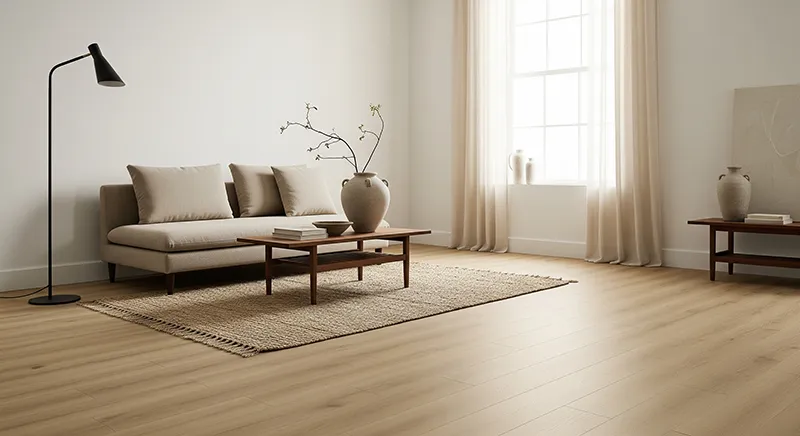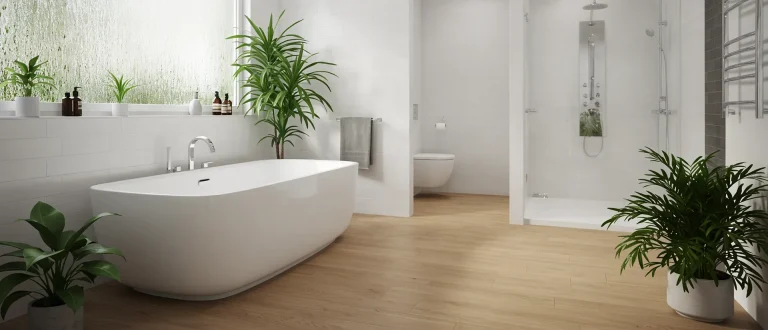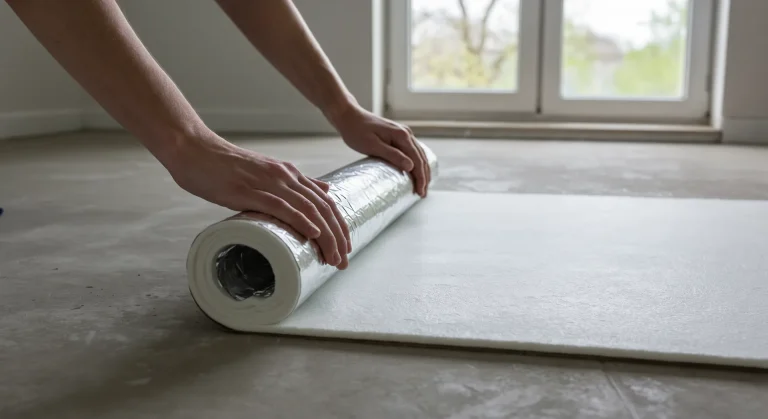In a world that often feels fast-paced and chaotic, our homes have become more than just living spaces; they are our sanctuaries. There is a growing desire for interiors that feel calm, uncluttered, and connected to nature. Answering this call is Japandi, an interior design philosophy that has taken the UK by storm. More than just a fleeting trend, Japandi is a thoughtful fusion of two celebrated design traditions, creating homes that are both beautifully minimalist and deeply comforting.
But what is Japandi style exactly? It’s the perfect marriage of Japanese minimalism and Scandinavian functionality. It blends the Japanese concept of “wabi-sabi”, which is about finding beauty in imperfection and nature, with the Scandinavian notion of “hygge,” which embodies cosiness, comfort, and simple contentment. This guide for 2025 will explore the core principles of the Japandi look, show you how to choose the right materials and flooring, and provide inspiration for creating this serene and stylish aesthetic in your own UK home.
Jump to Section:
- What is Japandi? The Perfect Fusion of Japanese & Scandinavian Design
- The Core Principles: How to Create the Japandi Look & Feel
- The Foundation of Japandi Style: Choosing the Right Flooring
- A Japandi Sanctuary: Room-by-Room Ideas for Your UK Home
- Key Elements: Japandi Furniture, Decor, and Colour Palettes
- Why Japandi is the Perfect Interior Style for Modern UK Living
- Bringing Japandi Home: Simple Steps to Get Started
- Japandi: A Philosophy for a Calmer Home
What is Japandi? The Perfect Fusion of Japanese & Scandinavian Design
Japandi is a hybrid design trend that expertly balances two distinct philosophies from opposite sides of the globe. While they may seem different, they share a common ground in their appreciation for simplicity, natural elements, and craftsmanship.
- The Japanese Influence (Wabi-Sabi): This ancient Japanese philosophy centres on finding beauty in the imperfect, impermanent, and incomplete. In interiors, this translates to an appreciation for natural materials that age gracefully, handcrafted items, uncluttered spaces, and an overall sense of tranquillity and calm. It’s about creating a serene environment that feels connected to nature.
- The Scandinavian Influence (Hygge): The Danish concept of “hygge” is about creating a feeling of cosiness, contentment, and well-being through simplicity and comfort. Scandi design is known for its clean lines, functionality, lack of clutter, and use of light, natural materials to create a warm and inviting atmosphere, even during long, dark winters.
The result of this fusion is Japandi: a style that is minimalist yet warm, elegant yet functional, and sophisticated yet beautifully simple. It takes the best of both worlds to create a truly timeless and liveable interior.
The Core Principles: How to Create the Japandi Look & Feel
To achieve the Japandi style, focus on these key principles:
- Minimalism & Intentional Living: The cornerstone of Japandi is a clutter-free environment. It champions the idea of “less is more,” focusing on a few well-chosen, meaningful items rather than an abundance of possessions.
- Natural Materials: Both traditions revere nature. Japandi interior design is rich in materials like wood (both light Scandinavian woods like oak and ash, and darker Japanese-inspired tones like walnut), bamboo, rattan, stone, paper, and natural textiles like linen, cotton, and wool.
- Muted & Earthy Colour Palette: The colour scheme is calm and neutral. Think of a base of cream, beige, oatmeal, or stone grey, layered with richer, earthy accent colours like terracotta, muted black, indigo blue, or sage green.
- Quality & Craftsmanship: Japandi design favours well-made, durable pieces over fast-fashion homewares. It’s about investing in furniture and objects that have a sense of purpose, quality craftsmanship, and timeless appeal.
- Bringing Nature Indoors (Biophilia): The connection to nature is vital. This is achieved through the use of natural materials, large windows to maximise natural light, and the inclusion of simple, elegant houseplants like a single Fiddle Leaf Fig or a delicate bamboo plant.
- Functionality First: Every item in a Japandi home should have a purpose. Furniture is chosen for its simple form and practical function, and storage is often cleverly concealed to maintain an uncluttered look.
The Foundation of Japandi Style: Choosing the Right Flooring
The floor is the canvas for your entire Japandi design scheme. The ideal Japandi flooring is clean, natural, understated, and warm, providing a calming backdrop for the rest of your interior.
- Engineered Wood Flooring: This is a top choice for an authentic Japandi look. Opt for wide planks in a light wood like Oak or Ash to reflect the Scandinavian influence. A finish that is either matt or a natural oil is perfect, as it avoids a high-gloss, artificial look and celebrates the wood’s natural texture and grain.
- Luxury Vinyl Plank (LVP): An excellent and highly practical alternative. High-quality LVP in a realistic, light or mid-tone oak effect with a matt finish and a textured surface (Embossed in Register) can perfectly capture the natural wood aesthetic while offering 100% waterproof performance and superior durability – ideal for kitchens, bathrooms, and busy hallways.
- Laminate Flooring: For those on a tighter budget, a high-quality laminate floor can work well. Choose a product with a very realistic, matt-finish, light wood-effect design and pair it with a good quality underlay to improve the underfoot feel and acoustics.
- Concrete-Effect Flooring: For a more minimalist, wabi-sabi inspired look, a floor that mimics polished concrete can be very effective. This can be achieved with large format porcelain tiles or Luxury Vinyl Tiles (LVT). This harder, cooler look should be balanced with plenty of soft, natural textures like jute or wool rugs.
A Japandi Sanctuary: Room-by-Room Ideas for Your UK Home
- The Japandi Living Room: A low-profile sofa in a natural fabric (linen or cotton-blend) in a neutral colour forms the centrepiece. Pair it with a simple, beautifully crafted wooden coffee table and a single, elegant armchair. Add texture with a jute or wool area rug and a few cushions in earthy tones. A statement paper lantern and a single, large houseplant complete the look.
- The Japandi Bedroom: This should be the ultimate serene retreat. A low platform bed made from light or dark wood is ideal, dressed in soft, natural linen bedding in muted colours. Keep clutter to a minimum with concealed storage. Lighting should be soft and layered, using simple bedside lamps and perhaps a floor lamp with a paper shade.
- The Japandi Kitchen: Simplicity and functionality are key. Think clean lines, with handleless cabinetry in a natural wood or a matt neutral finish. Worktops should be uncluttered, with everyday items stored away. Open shelves can display a few pieces of simple, handmade ceramic dinnerware.
- The Japandi Bathroom: Aim for a spa-like feel. Use large format tiles with a slate or stone effect, or opt for the warmth of wood-effect LVP. Pair with simple, high-quality fixtures in matte black or brushed metal. Use bamboo accessories for storage and add a small stool and a single plant for an organic touch.
Key Elements: Japandi Furniture, Decor, and Colour Palettes
- Furniture: Look for pieces with clean lines, low profiles, and an emphasis on natural materials. A key Japandi style feature is the contrast of light and dark woods – for example, a light Scandi-style oak dining table paired with darker, Japanese-inspired chairs. Rattan and cane details also feature heavily.
- Lighting: Avoid harsh, overhead lighting. Opt for soft, diffused light from multiple sources. Iconic paper lanterns, simple pendant lights, and minimalist table lamps are perfect.
- Textiles: Focus on natural, textured fabrics. Think of crumpled linen throws, chunky wool blankets, simple cotton curtains, and jute or sisal rugs. Pattern is used sparingly; texture is everything.
- Colour Palette: Start with a warm, neutral base of white, off-white, beige, or pale grey. Introduce contrast and depth with accents of muted black, indigo blue, sage green, or earthy terracotta.
- Accessories: Decor is minimal but intentional. Choose items with meaning or beauty: a piece of handmade pottery, a simple glass vase with a single branch, a few curated books, abstract line art. The goal is to avoid visual clutter.
Why Japandi is the Perfect Interior Style for Modern UK Living
The Japandi philosophy resonates particularly well with modern UK lifestyles:
- Maximising Space & Light: Its minimalist, uncluttered principles are perfect for making UK homes, which can often be compact, feel more spacious and open. The focus on light colours and maximising natural light is ideal for our often-grey climate.
- Creating a Calm Retreat: In our busy, always-on world, Japandi interior design offers a way to create a genuine sanctuary at home – a place to switch off and feel calm.
- Sustainability & Quality: The emphasis on natural, sustainable materials and well-crafted, long-lasting furniture aligns with a growing desire among UK homeowners to buy less but buy better.
- Versatility: The style is incredibly adaptable. It works beautifully in modern new builds, adds a sense of calm to bustling city apartments, and can even bring a clean, contemporary feel to older period properties. Its natural, serene aesthetic is also perfectly suited to coastal homes, creating a tranquil interior that connects with the outside environment.
Bringing Japandi Home: Simple Steps to Get Started
- Declutter Ruthlessly: The first and most important step. Remove anything that isn’t functional, beautiful, or meaningful.
- Introduce Natural Materials: Swap out synthetic items for those made of wood, bamboo, linen, or wool.
- Adopt a Muted Colour Palette: Paint walls in a warm, neutral shade to create a calming canvas.
- Invest in One Quality Piece: Choose one well-crafted piece of furniture or a beautiful accessory to be a focal point.
- Add Greenery: Bring a simple, elegant houseplant into each room.
Japandi: A Philosophy for a Calmer Home
Ultimately, the meaning of Japandi goes beyond just an aesthetic. It’s a philosophy that encourages a more intentional and mindful way of living. By curating our homes with simple, functional, natural, and beautifully crafted elements, we can create spaces that are not only stylish and timeless but also genuinely contribute to our sense of well-being. For those seeking to create a calm, uncluttered, and sustainable home in 2025, the Japandi style offers the perfect inspiration.

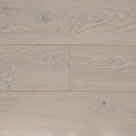 Light
Light Grey
Grey Natural
Natural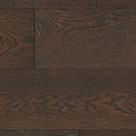 Dark
Dark White
White Light
Light Grey
Grey Natural
Natural Dark
Dark Black
Black
